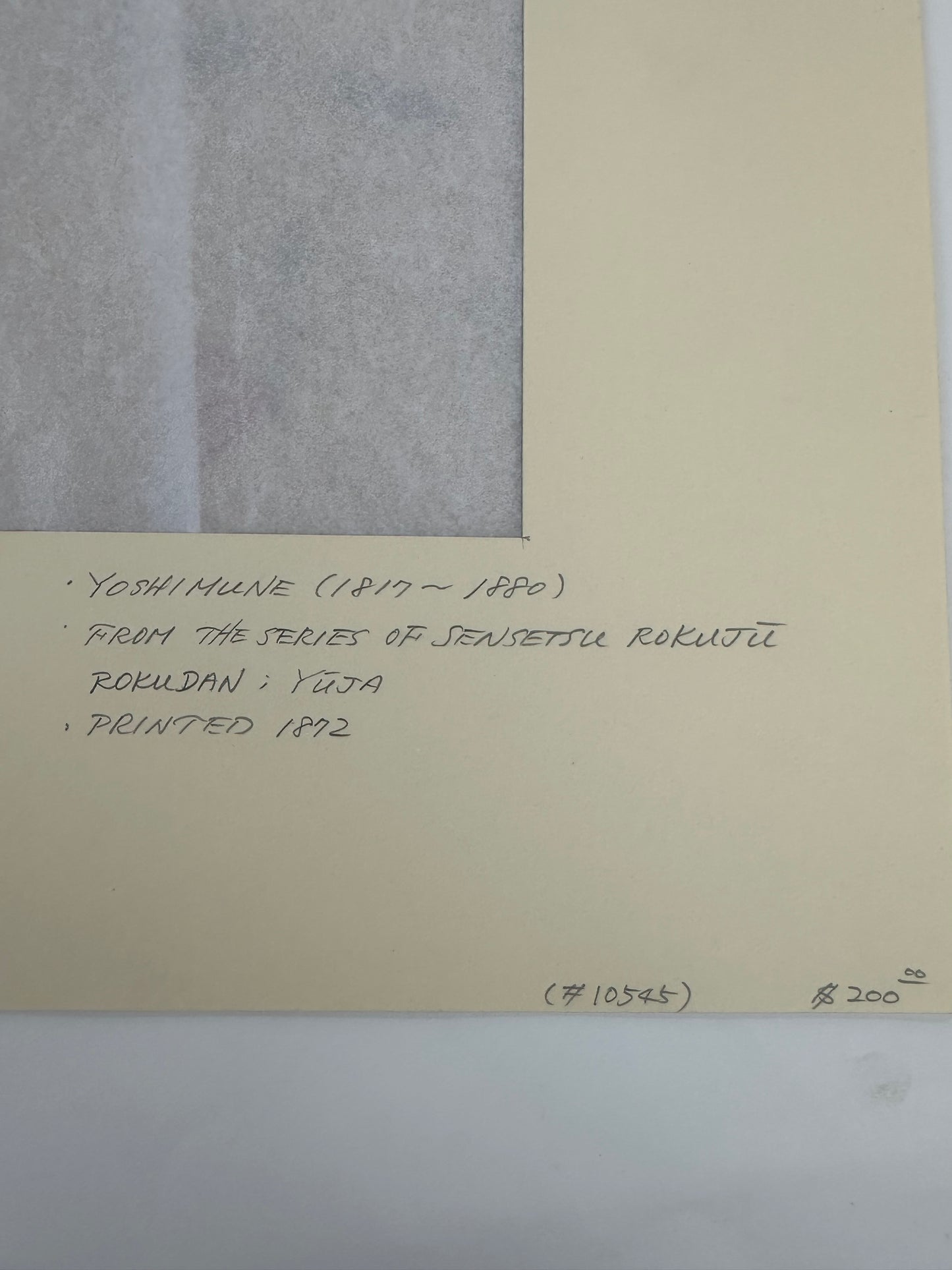Original Arai Yoshimune II (1863–1941) “Kindly One’s Compassionate Heart” 36 Tales of Snow 1873 LS #208
Original Arai Yoshimune II (1863–1941) “Kindly One’s Compassionate Heart” 36 Tales of Snow 1873 LS #208
Couldn't load pickup availability
An original Meiji-period color woodblock print by Arai Yoshimune II (新井 芳宗, 1863–1941), also known as Utagawa Yoshimune II, from his series Thirty-Six Selected Tales of Snow (摂雪三十六談). Published by Akiyama Buemon (秋山 武右衛門) in 1873 (Meiji 6).
This design shows a samurai emerging from a temple doorway into a snowy courtyard, bow in hand, as a traveler bows deeply in the falling snow. The graceful winter composition conveys both humility and empathy — moral values often celebrated in Meiji-era narrative prints. The textures of snow and wood are rendered with fine bokashi shading and subtle karazuri embossing, exemplifying Yoshimune’s refined technical control.
-
Artist: Arai Yoshimune II (新井 芳宗, 1863–1941)
-
Series: Thirty-Six Selected Tales of Snow (摂雪三十六談 Setsugetsuroku Sanjūrokuban)
-
Title: “The Kindly One’s Compassionate Heart” (厚者代心草 Kōsha no Daishinsō)
-
Date: 1873 (Meiji 6)
-
Publisher: Akiyama Buemon (秋山 武右衛門)
-
Medium: Nishiki-e (multi-color woodblock print)
-
Dimensions: [insert]
-
Condition: Good overall; light age toning and foxing consistent with age; mounted to backing board.
-
Provenance: Shogun’s Gallery, Portland, Oregon.
Artist Biography — Arai Yoshimune II (新井 芳宗, 1863–1941)
Born in Tokyo, the eleventh and youngest son of Utagawa Yoshimune I (1817–1880), Yoshimune II studied under the celebrated ukiyo-e master Tsukioka Yoshitoshi (1839–1892) and took the name Toshiyuki at age thirteen. After his father’s death, he was adopted by the Arai family and succeeded to his father’s name in 1882, becoming Arai Yoshimune II.
Yoshimune worked as both illustrator and printmaker, primarily with the Hasegawa and Nishinomiya publishing houses. His most celebrated works include contributions to Hasegawa’s Night Scenes (Yoru no Fūkei) series. Bridging the Edo and Meiji aesthetic worlds, his art combines the narrative vigor of the Utagawa school with a quiet naturalism and poetic tone characteristic of the modern Meiji sensibility.














